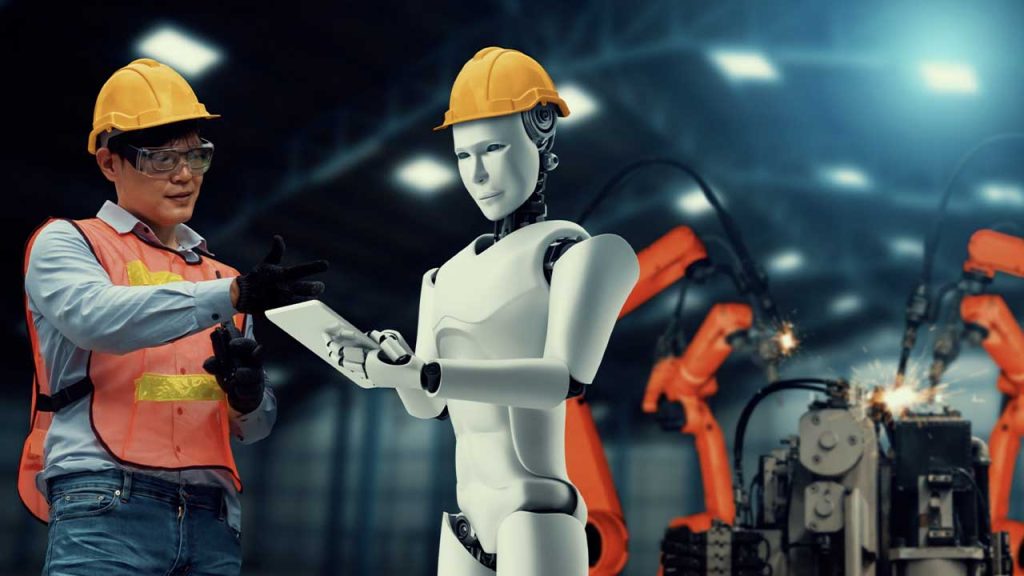8 steps manufacturers can take to digital transformation
The thought of digitalization can be overwhelming. When we first started talking about IIoT or digitalization about a decade ago, the concepts were prescribed as an all-encompassing, top-down approach taking the industrial world from Industry 3.0 to Industry 4.0.
However, that approach proved to be too big. Rather than identify real problems that could be fixed, some manufacturers wanted to wave a magic wand and spend a ton of money trying to bring everyone up to speed.
A better approach is to start with a relatively small pilot study and grow from there. In this article, I’ll outline eight steps that manufacturers can take to approach digitalization with purpose, so that their organization can see real and lasting impact.
- Get executive-level buy-in.
Don’t think of digitalization as its own end, but as the means to a more important end, such as improving operations, achieving net-zero, or another business outcome. To achieve long-term impact, digitalization needs executive buy-in from the start.
Without leadership support, digitalization will stay isolated. Even if your project is successful, you won’t be able to scale plant- or enterprise-wide. Secondly, the organization will need a culture committed to digitalization. Employees need to have confidence that the effort will not put them out of work.
- Identify a trouble spot – a machine or process – where you can start.
Start with a small, manageable project where you can demonstrate how improvement will materially benefit the business. For example, most manufacturers measure overall equipment effectiveness (OEE) as a key performance indicator (KPI). You calculate OEE by multiplying your yield per unit by quality and production time. Perhaps your machine has a 0.57 OEE. You can set a goal to improve that to at least 0.75, or whatever improvement you decide is achievable and will have an impact.
- Implement the minimally viable solution set.
Rather than try to digitalize everything at once, look at a real process that’s small in scope and then apply the minimal number of steps to fix that problem (Figure 1). There’s no need to sign up for an expensive, consultant-led digitalization transformation project.
Talk with a partner with practical experience in implementing real-world digitalization projects. A partner like this can help you most effectively install PLCs and edge devices and then connect those devices to sensors that measure things like vibration, temperature, currents, and energy. Bring a few data points (3 to 5 percent of the I/Os on a machine) into the system, and then match that up with production data. You probably already have the data, but just need to collect it and look for correlations.
- Log all relevant data.
Once you’re collecting that data, you need to measure it, monitor it, and transport it somewhere – maybe on-premise or maybe in the cloud – and then log into an appropriate database or historian. There are a lot of freeware options, like Mongo or Influx databases.
- Present that data, in the right format, to the right people.
There are probably many different people who interact with that machine for different reasons. The data you’re collecting could benefit machine operators, engineers, and anyone else impacted by the machine’s operations.
Rather than introduce something unfamiliar, adapt the data to their current workflow and process. Present that data in familiar formats (Figure 2A and 2B). A plant manager might want to see an Excel spreadsheet. A machine operator might want to view it in the maintenance program they already use. Other people may want to see nothing more than a flashing light if the machine’s not working right. This empowers the workers to take the actions needed.
If the solution doesn’t work, iterate. Change one variable at a time, and you’ll likely optimize to a degree of success. If not, fail fast and learn.
- Scale to similar machines.
Now that you’re seeing results from your pilot, you can apply those lessons to multiple machines in a single plant, or even to multiple plants across the country (or world).
The machines in your plant might be very different, but they all have some similarities. For example, they all use some form of energy. Evaluating energy data can be valuable from a business perspective, and the technology for scaling energy monitoring is similar, no matter what type of machine.
Once you’ve scaled, it can be instructive to compare the efficiency of different machines or plants. Can you replicate what you’ve done here and bring other machines up from an OEE of .58 to a .75, as you did in the original project?
Compare and tweak a few things for similar machines and even apply them to dissimilar machines and and monitor your results. But remember: if you did not get that executive buy-in at the beginning, scaling will be difficult.
- Share with other stakeholders who have a unique point of view.
After you’ve addressed the initial problem, the data is still available. Other people outside the original team might bring a perspective that was overlooked initially. A data scientist might look at the same data set and see additional opportunities for improvement (Figure 3).
For example, one manufacturer collected and analyzed machine energy and production data and was able to save around 10% on electricity and the cost associated with that power. This was the initial aim, and the project was a success – the company saved energy and money, while improving its carbon footprint.
But it did not stop there. After the data scientist took that same data and ran it through a machine-learning model, they were able to detect anomalies. With this information, the manufacturer could then apply predictive maintenance practices to reduce downtime.
- Evolve
Humans are great at identifying the problem, and once presented with data and information in familiar ways (SCADA, reports, etc.), at implementing domain-specific common-sense solutions. However, we are not great at digesting terabytes of data and inferencing.
The data scientist can run the data through machine learning models to find additional anomalies. This could result in a predictive maintenance plan that would improve OEE and save money down the line.
The ML brings insights that humans could find on their own. As your plant digitally matures, you will evolve and find new ways to maximize operations, improve sustainability, and save money.
Images/captions

Figure 1: Before going all in on a large digitalization project, start with a small, manageable machine or process and implement the minimally viable solution.


Figures 2A and 2B: Different people in your organization will need the data in different formats. Adapt the data to individual workflow.

Figure 3: Data scientists can take advantage of machine learning and other tools to find deeper insights and make additional improvements.
About the author
This article was written by Dave Eifert, Senior Business Development Manager – Industry Management and Automation, Phoenix Contact USA
Related articles:



